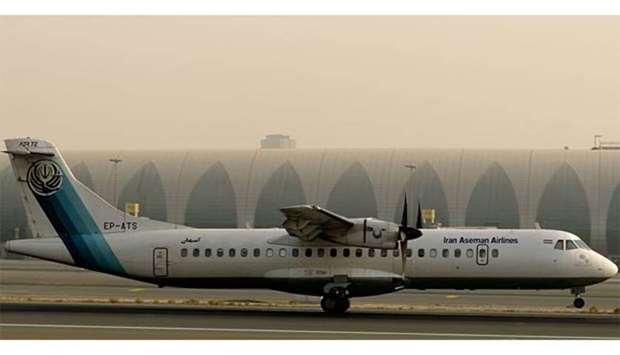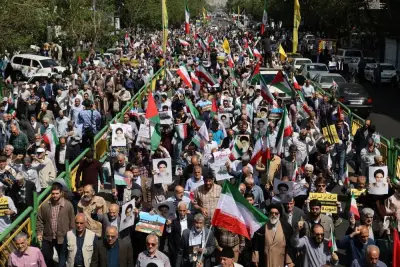All 66 people on board an Iranian passenger plane were feared dead on Sunday after it crashed into the country's Zagros mountains, with emergency services struggling to locate the wreckage in blizzard conditions.
Aseman Airlines flight EP3704 left Tehran around 0800 for the city of Yasuj, some 500 kilometres to the south, the airline's public relations chief Mohammad Tabatabai told state broadcaster IRIB.The ATR-72 twin-engine plane, in service since 1993, disappeared from radar around 45 minutes after takeoff from the capital's Mehrabad airport.
Emergency services had yet to locate the precise location of the crash.
The plane was carrying 60 passengers, including one child, as well as six crew, said Tabatabai.
"After searches in the area, unfortunately we were informed that the plane crashed. Unfortunately, our dear ones lost their lives in this incident," he said.
But he later retracted his statement, telling the ISNA news agency: "We still have no access to the spot of the crash and therefore we cannot accurately and definitely confirm the death of all passengers."
There were conflicting reports on the location of the crash site as emergency teams battled severe weather.
"The rescue and relief teams were sent to the possible area of the crash... but the helicopter could not continue its path due to snow and blizzard," Jalal Pooranfar, regional head for Iran's emergency services, told the ISNA news agency.
He said teams were being sent by land.
"Right now there are five rescue and relief teams of the emergency service in the area. But they still haven't spotted anything," said Pooranfar.
The Relief and Rescue Organisation of Iran's Red Crescent said it had also sent 12 teams to the region.
Aseman currently has a fleet of 36 planes, including at least three ATR-72s that date back to the early 1990s, according to the IRNA news agency.
A spokesman for ATR, a subsidiary of Europe's Airbus, told AFP in Paris the company was "researching the details" of Sunday's crash.
President Hassan Rouhani ordered the transport ministry to set up a crisis group to investigate the crash and coordinate rescue efforts, ISNA reported.
Decades of international sanctions have left Iran's airlines with ageing fleets of passenger planes which they have struggled to maintain and modernise.
Aseman's three Boeing 727-200s are almost as old as the country's 1979 Islamic revolution, having made their first flights the following year.
Iran has suffered multiple aviation disasters, most recently in 2014 when a Sepahan Airlines plane crashed killing 39 people just after take-off from Tehran, narrowly avoiding many more deaths when it plummeted near a busy market.
Lifting sanctions on aviation purchases was a key clause in the nuclear deal Iran signed with world powers in 2015.
Following the deal, Aseman Airlines finalised an agreement to buy 30 Boeing 737 MAX jets for $3bn last June, with an option to buy 30 more.
However, the sale could be scuppered if US President Donald Trump chooses to reimpose sanctions in the coming months, as he has threatened to do.
The US has maintained its own sanctions on Iran, blocking almost all trade with the country, but plane manufacturers were given a specific exemption under the nuclear deal.
The US Treasury Department, which must approve each such sale, has done so for 80 Boeing jets destined for national carrier Iran Air as well as 100 Airbus planes for Iran Air.
The first few Airbus jets have already arrived in Tehran.
Boeing faces heavy criticism from US lawmakers, who say Iranian airlines have been used to ship weapons and troops to Syria and other conflict zones.



